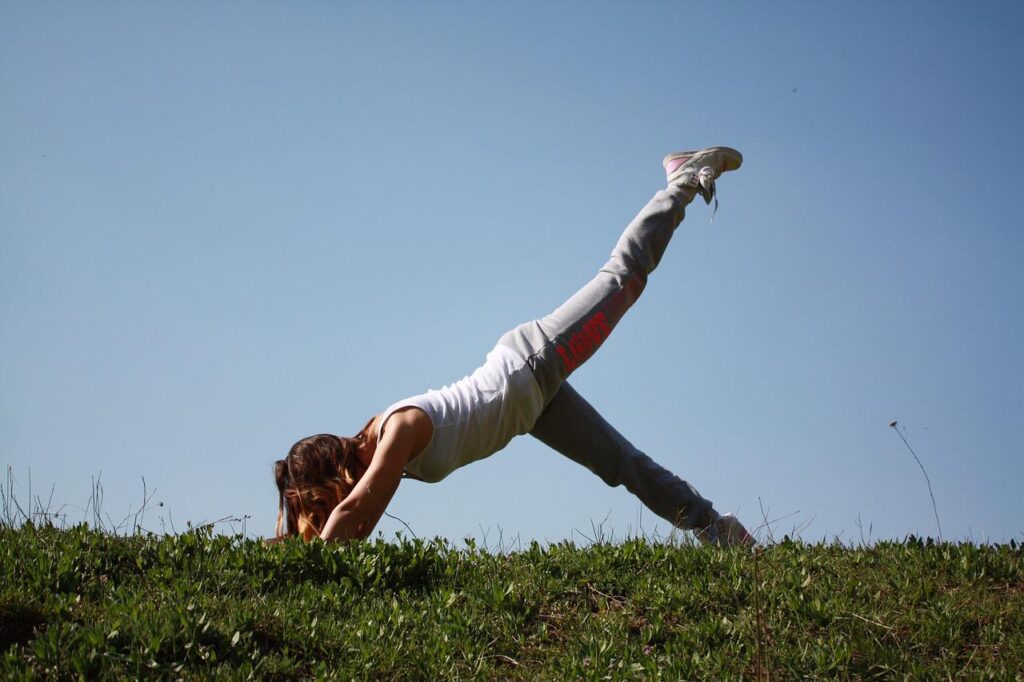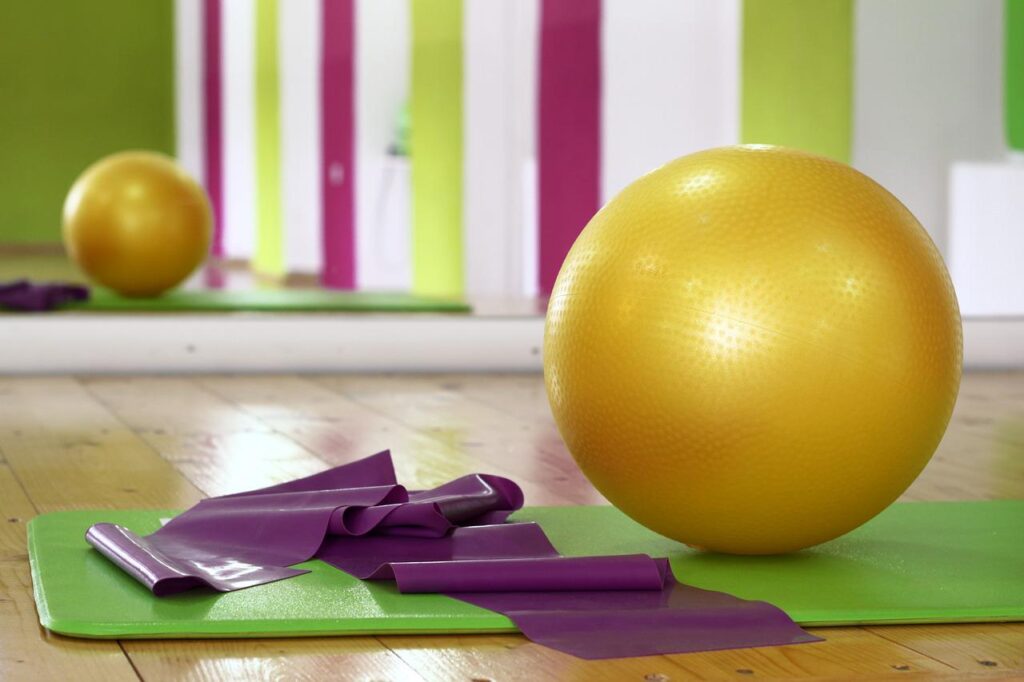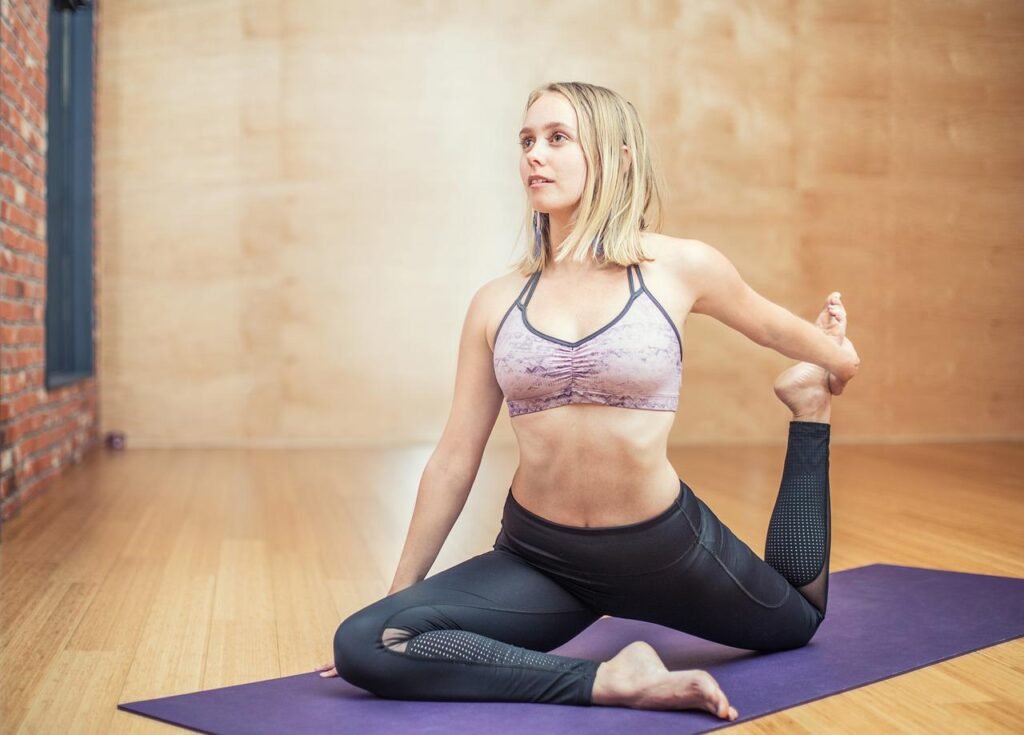Pilates is a form of exercise which concentrates on strengthening the body with an emphasis on core strength. This helps to improve general fitness and overall well-being.
Similar to Yoga, Pilates concentrates on posture, balance and flexibility. In Pilates the chance of injury is much lower than with other more strenuous forms of exercise.
Pilates also focuses on the mind-body connection. While doing the various exercises your mind needs to be constantly aware of your breathing and the way your body moves.
This form of exercise was developed by Joseph Pilates in Germany where he was a carpenter and gymnast. He invented Pilates as an exercise program for injured dancers and soldiers while living in the UK. Joseph Pilates believed that physical and mental health were closely connected. In the 1920’s he immigrated to the US and opened a Pilates studio in New York. Originally this form of exercise was called Contrology.
Can Anyone Do Pilates?
Because Pilates can be modified to provide either a gentle strength training program or a challenging workout, most people would have no problem with this form of exercise. It is suitable both for beginners and for people who already exercise regularly.
If you’re a beginner you can start with basic exercises and then once you’ve mastered those, you can work on the more advanced moves. It’s a good idea when you’re just starting out in Pilates to go to Pilates exercise classes or have a private instructor. This way the instructor can make sure that you are doing the exercises correctly to avoid any injury.
It is recommended to check with your health professional if you haven’t exercised for a while, are older or pregnant, or have health problems.
Pilates may not be recommended if you have the following conditions:
• Unstable blood pressure.
• A herniated disk.
• Severe osteoporosis.
• A risk of blood clots.
What Health Benefits Can Be Obtained from Pilates?
So when considering what is pilates the biggest reason people ask about this exercise is they wonder what the health benefits are.
As Pilates focuses on core strength, posture and flexibility the health benefits include:
• Good posture – Pilates will teach you to gain and maintain good posture. The exercises require that your body is always in alignment. This is especially beneficial if you suffer from lower back pain.
• Muscle Tone – The exercises involve the use of muscles that you may not use on a daily basis. After the initial soreness, you’ll find that your muscles will be much more toned. This is especially good for older people and those who are normally quite sedate in their daily life as muscle tone is usually lost with age and inactivity.
• Flat abdominal muscles – Because Pilates focuses on strengthening your core which includes your abdominal muscles, you’ll find that one of the benefits of Pilates is that it will result in a flat stomach.
• Flexibility – As we age we tend to lose the flexibility we had when we were young. Pilates will restore your flexibility, gently at first of course. After a while though, you’ll be amazed at how much more flexible your body has become. This is especially important for avoiding injuries from falls.
• Improves your balance – Through the mind-body connection which is taught in Pilates you will become much more aware of how your body moves and performs. Therefore Pilates not only improves your physical balance through correct posture but will also restore your mind-body balance.
• Reduces stress – When doing the exercises, you’ll be totally engrossed and won’t be able to think about all those responsibilities that weigh you down on a day to day basis. You’ll be more focused on your breathing and on the moves that you are making with your body. This is an excellent way to relieve stress.
• Gives you a general sense of well-being – Because Pilates focuses on providing balance between your mind and body it gives you an overall sense of well-being.
Will Pilates Help You to Lose Weight?
Because Pilates is a muscle strengthening form of exercise it can help you to trim and tone certain areas of your body especially your stomach, legs and buttocks. Classes can be tailored to offer either a gentle exercise program for providing core strength, flexibility and balance or a complete workout for a more rigorous exercise program.
Bear in mind though that Pilates is not classed as an aerobic exercise, so for effective weight loss you should combine your Pilates exercises with a healthy diet and some regular aerobic activity such as walking, swimming or cycling.
What Areas of The Body Does Pilates Target?
Pilates works mainly on your core which includes your abdominal area and your spinal area. This is why Pilates can be extremely beneficial for people who suffer from lower back pain.
Other areas of your body that are strengthened and toned through Pilates include your legs, especially your upper thighs, and your buttocks.
Pilates has also been useful for people who suffer from arthritis as it helps to keep your joints flexible. Because Pilates strengthens the thigh muscles this may be particularly useful in preventing arthritis and knee injuries.
Do You Need Any Special Equipment?
When you’re just starting out, a mat on the floor is really all you need. A lot of the basic beginner exercises can be done this way. Once you become more advanced you might like to seek out a gym or studio which offers private Pilates classes, we of course offer Pilates classes at each of our gyms.
At some studios will find specialised Pilates equipment like the Reformer, the Cadillac or special barrels and chairs.
We’ll discuss this equipment in more detail but to start with you really don’t need a lot of specialised equipment.
Pilates Equipment – What Is The Reformer?
The Reformer is basically a bed-like frame with a sliding carriage which is attached to one end with a set of springs. These springs are adjustable to offer different levels of resistance. There are also shoulder blocks on the carriage which stops you from sliding off as you push or pull the carriage.
A foot-bar is attached at the spring end of the reformer. This foot-bar can be used by your hands or feet as you move the carriage along. Long straps with handles are attached to the other end of the frame. These can pulled with your arms or legs and will also move the carriage.
To use the reformer, you can lie, sit or stand on it and perform exercises which push, pull or hold the carriage steady while the springs provide the right amount of resistance needed. One of the benefits of the reformer is that it can lengthen your muscles as they resists the force of the springs. This is called eccentric muscle contraction and is excellent for achieving strong, long muscles without added bulk.
The reformer is particularly useful if you have some form of injury or are recuperating from an injury as your muscles can be gently stretched and strengthened using only slight resistance.
Pilates Equipment – What Is The Cadillac?
The Cadillac is an interesting piece of equipment and at first glance, it looks more like a medieval torture device than a piece of exercise equipment.
It consist of a bed with a mat on it and a three sided frame going over the top and attached to either end of the bed. It usually stands about 6 feet tall. Attached to the frame are various apparatus like leg springs, arm springs, loops to hang from, a push-through bar and even a trapeze.
Due to its large size the Cadillac is not often used in group classes so if you want to try out this piece of equipment you would be better off searching for some private Pilate classes in your area. Some of these private studios have what is called a Cadillac wall unit which is basically one side of the Cadillac attached to a wall for better stability.
The Cadillac can accommodate all kinds of stretching exercises and is quite useful if you find it difficult to lie down on your back for long periods of time. You’ll almost feel like a gymnast when you use the Cadillac!
What Other Types Of Equipment Can Be Used In Pilates?
Other types of Pilates equipment include the stability chair, the ladder barrel, the spine corrector and the arc barrel.
These are all used as aids and supports to perform the various exercises. All of these are useful for isolating, strengthening and stretching various muscles. You’ll find most of these in private Pilates studios.
What is the Difference Between Yoga Classes and Pilates Classes?
Although there are similarities between yoga and Pilates as they both focus on the mind-body connection, yoga tends to focus more on spiritual well being. It is a more relaxing form of exercise whereas Pilates is more of a physical program which focuses on toning and strengthening.
What to Look for When Choosing a Pilates Class.
If you are relatively fit and want to try Pilates for the first time then a group class would be ideal. These usually last for about 60 minutes and is available with one one of our free guest passes. The instructors at all of our gyms are friendly and are expertly trained to cater for all fitness levels.
You can choose from either a pilates mat class which basically involves doing the various exercises on a mat or you may be able to find a group class which uses one or more of the specially designed pieces of Pilates equipment.
A mat class is a great way to start and may involve other pieces of equipment such as hand weights, stretch bands and foam rollers. Mat classes mainly focus on working against gravity and the weight of your body to hold and maintain a varied number of positions. This involves both strength and stamina.
For a more personal approach or if you need greater exercise modifications due to your age or possible past injury, then a private Pilates class may be more suitable.
A lot of private classes are conducted in Pilates studios which may also have the specialised Pilates equipment. This would definitely be ideal of you have had a previous injury and need some support with the exercise moves. In a private studio, you’ll get one-on-one attention and your instructor will be able to tailor the different exercises to suit your particular needs.
Is Pilates Good For Physical Therapy?
Many rehabilitation clinics and wellness centres now offer Pilates as a form of physical therapy. Research has found that Pilates can be an effective treatment for injuries and illnesses such as:
• Chronic neck and back pain.
• Hip or knee replacements.
• Multiple sclerosis.
• Fibromyalgia.
• Scoliosis.
It is also excellent for athletes, dancers and other sports professionals who have had some kind of injury and need rehabilitation to get back into top form. Because Pilates is a low-impact exercise, it can be tailored to work on certain areas of your body as long as you have a trained and qualified instructor.
Can Pilates be Done at Home?
Pilates can be a family affair not just for individuals, busy parents with kids can do it too. As well as teaching my kids about the important things in life like kids financial education, I get also teach them to stay fit.
You can certainly practise Pilates in your own home, which is a great bonus. To be honest, I love nothing better on a weekend, other than playing online bingo. There are many instructional videos available which you can follow along with. All you need is a mat and some loose, comfortable clothing.
If you’re a beginner however, it is advisable that you take a couple of classes first so that you can be shown the correct method of doing the exercises. This will avoid any injury that could occur from doing the various moves incorrectly.
You could even engage a private instructor to come to your home and get you started correctly.
So if you are looking for a body and muscle strengthening form of exercise that can be tailored to your particular fitness level and which will help to keep you flexible, then you should definitely consider trying Pilates.
Be prepared though, you’ll find that this type of exercise is quite addictive – but exercise that is enjoyable has to be a good thing!
Source: https://www.totalfitness.co.uk/blog/fitness/what-is-pilates/



